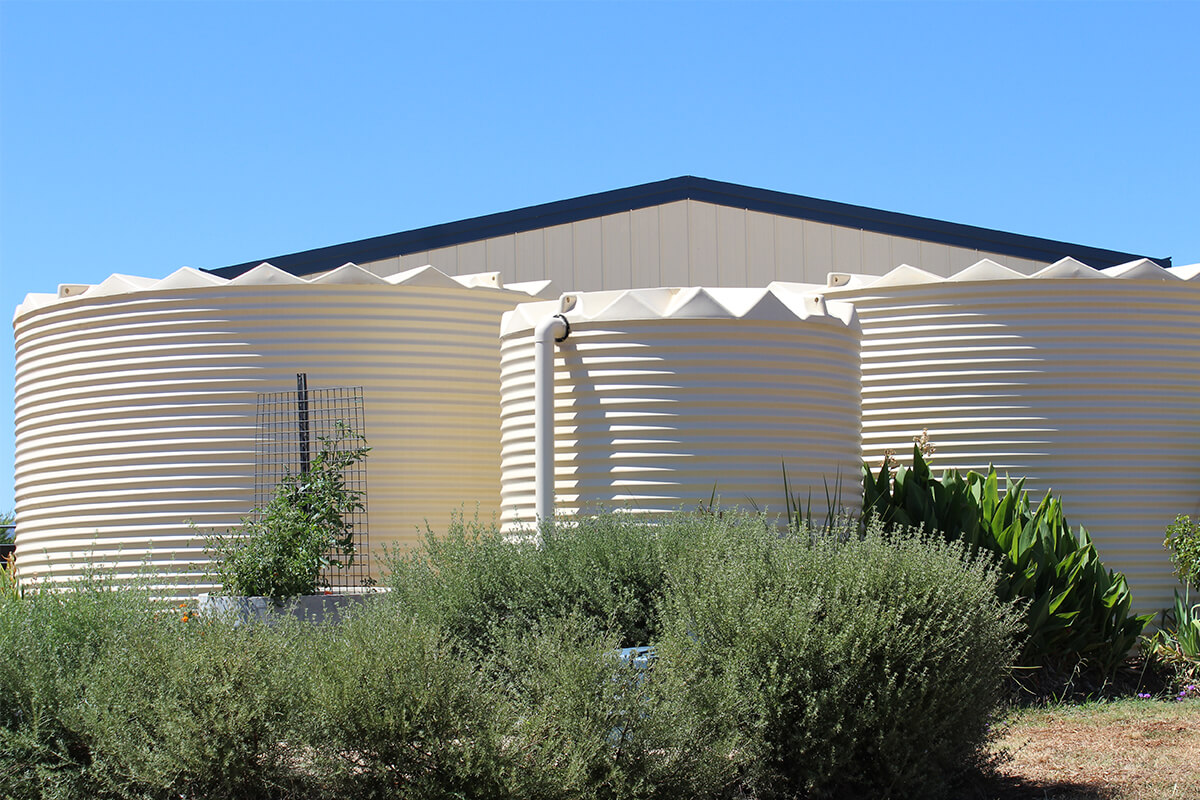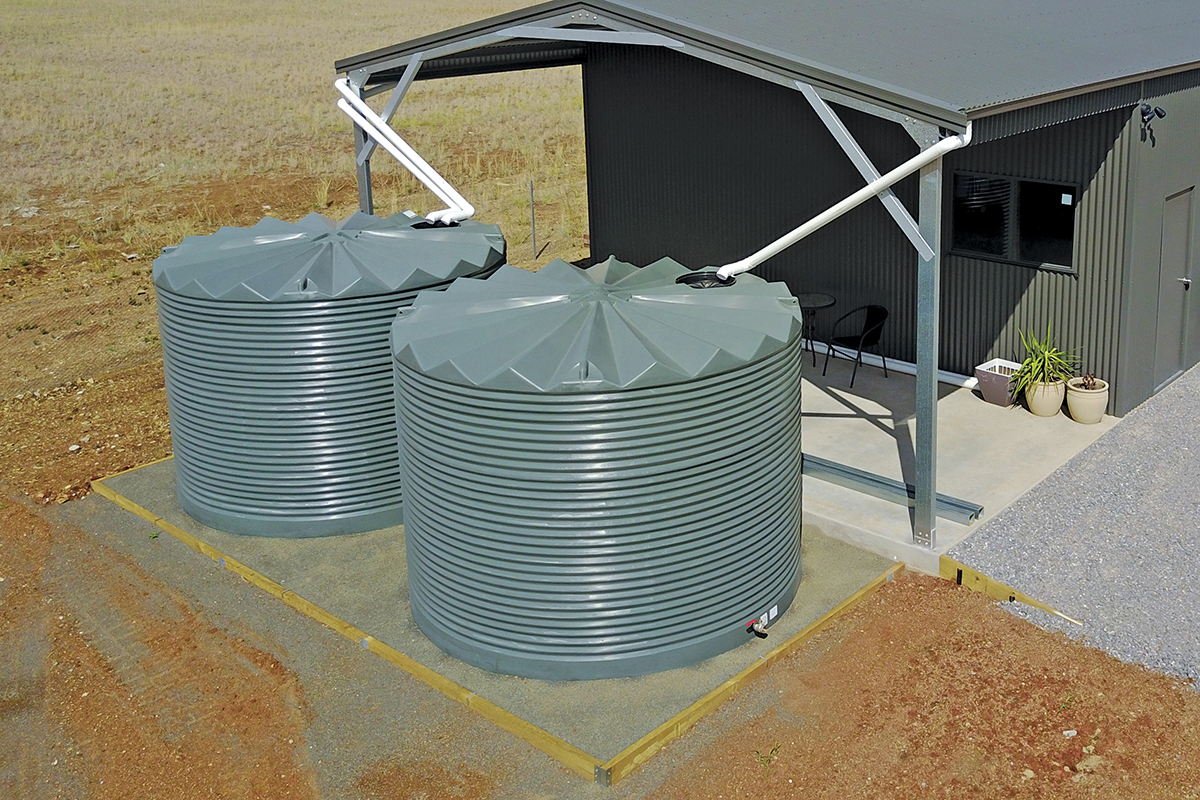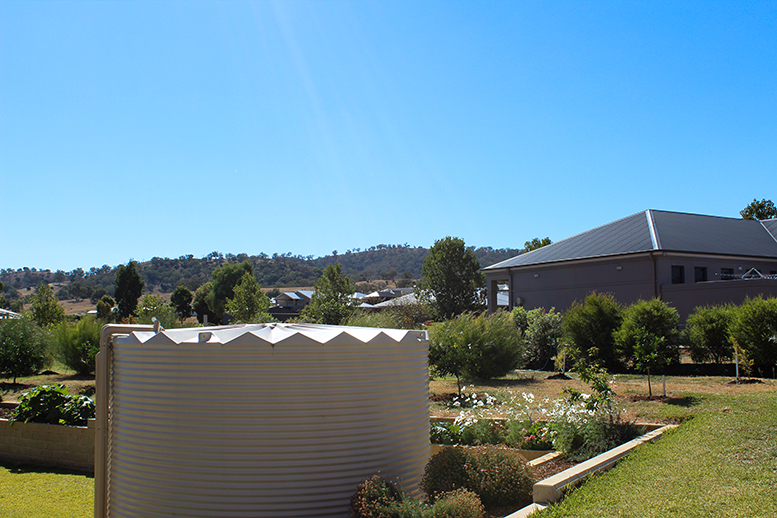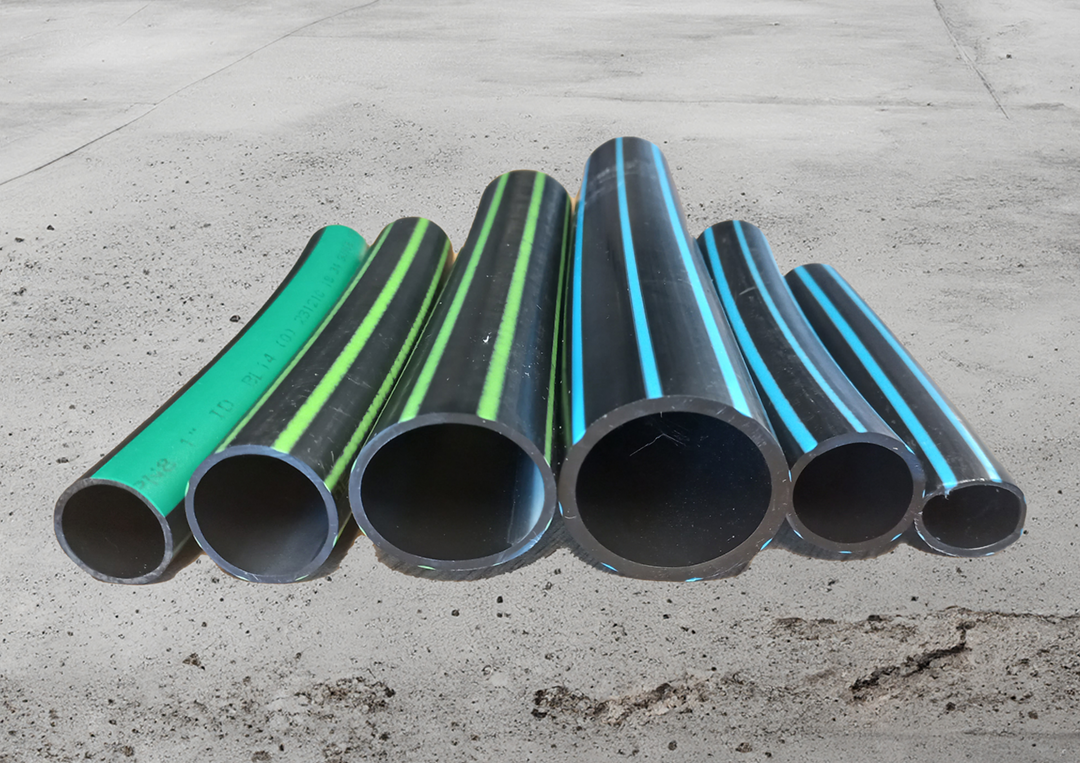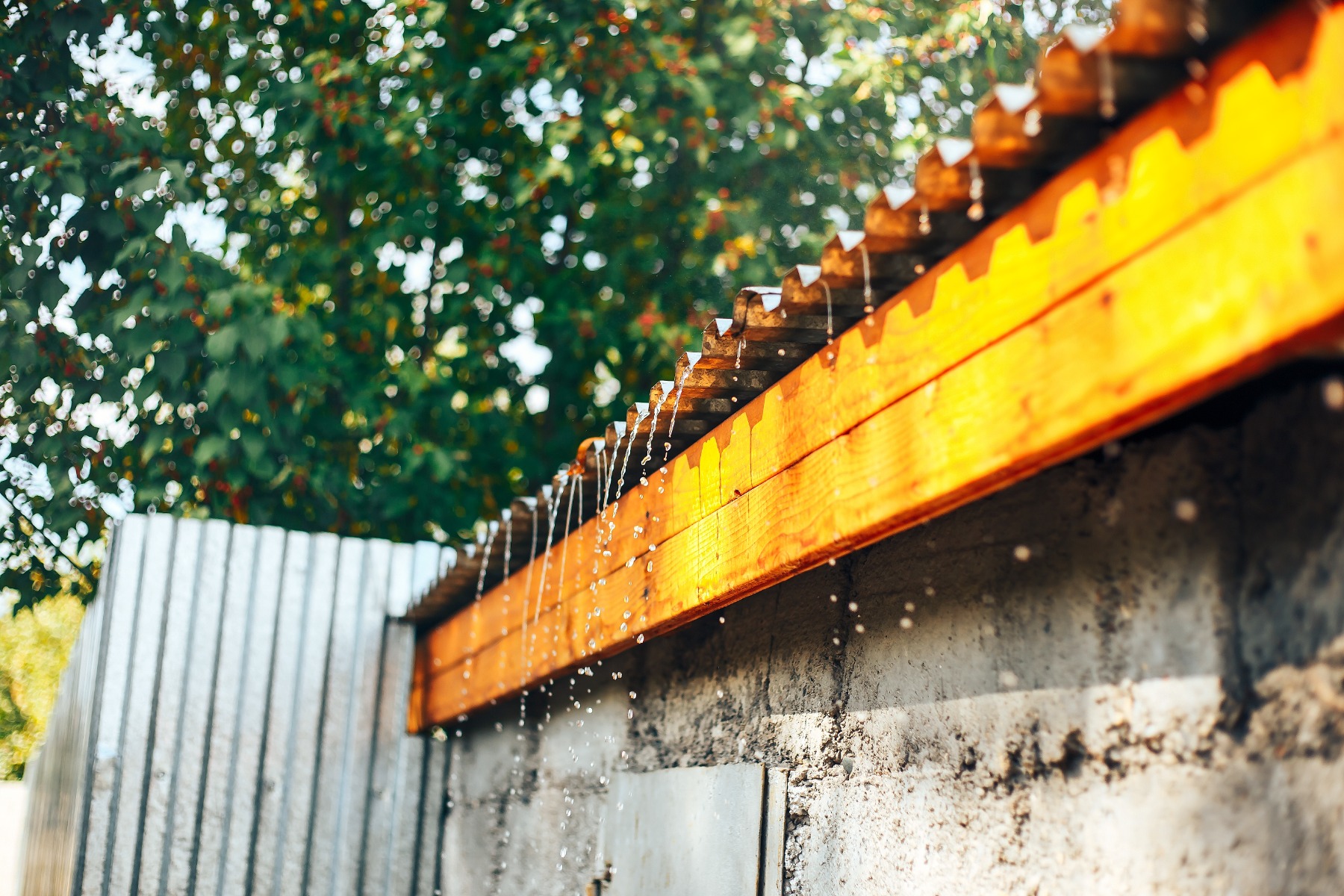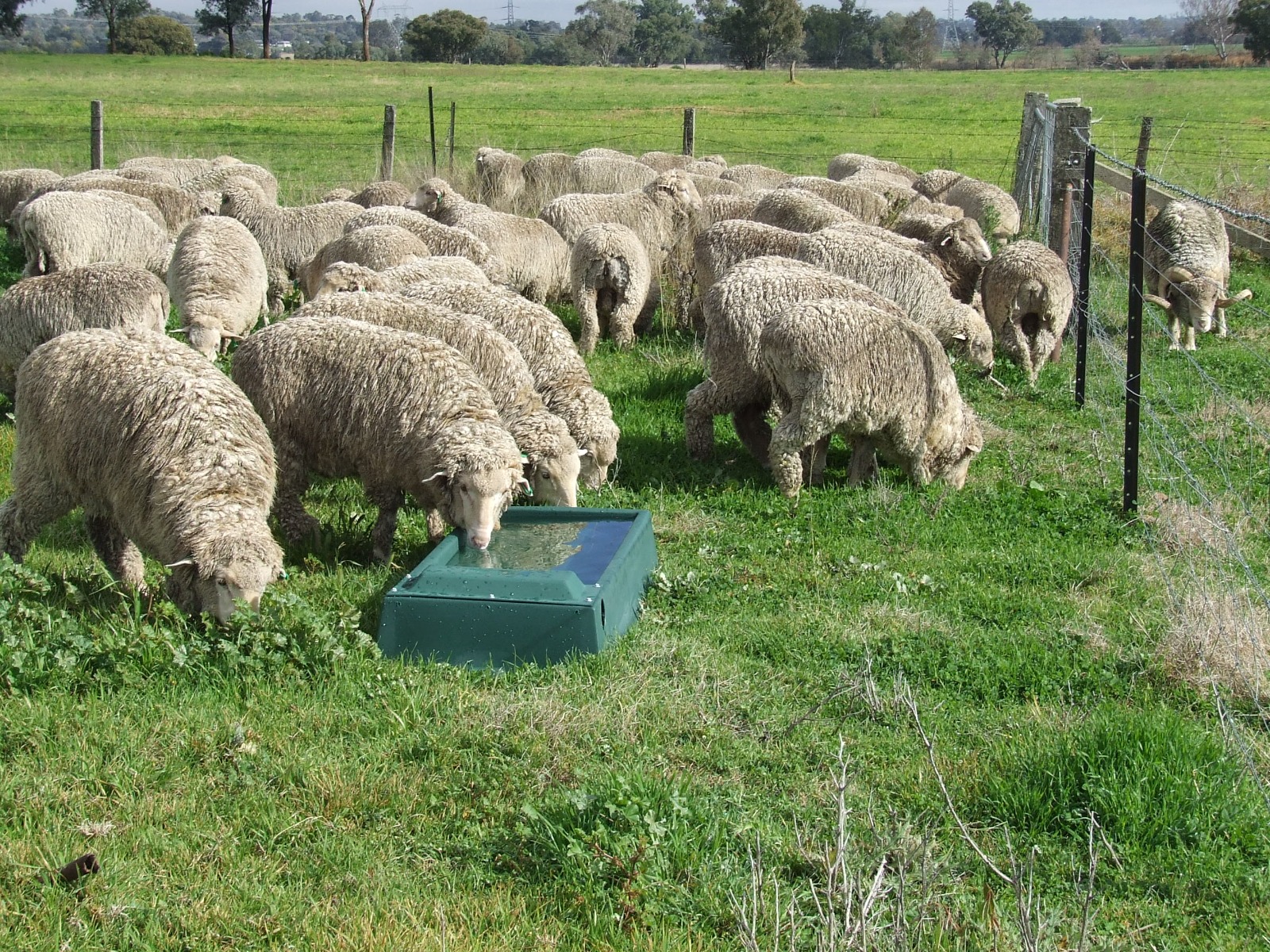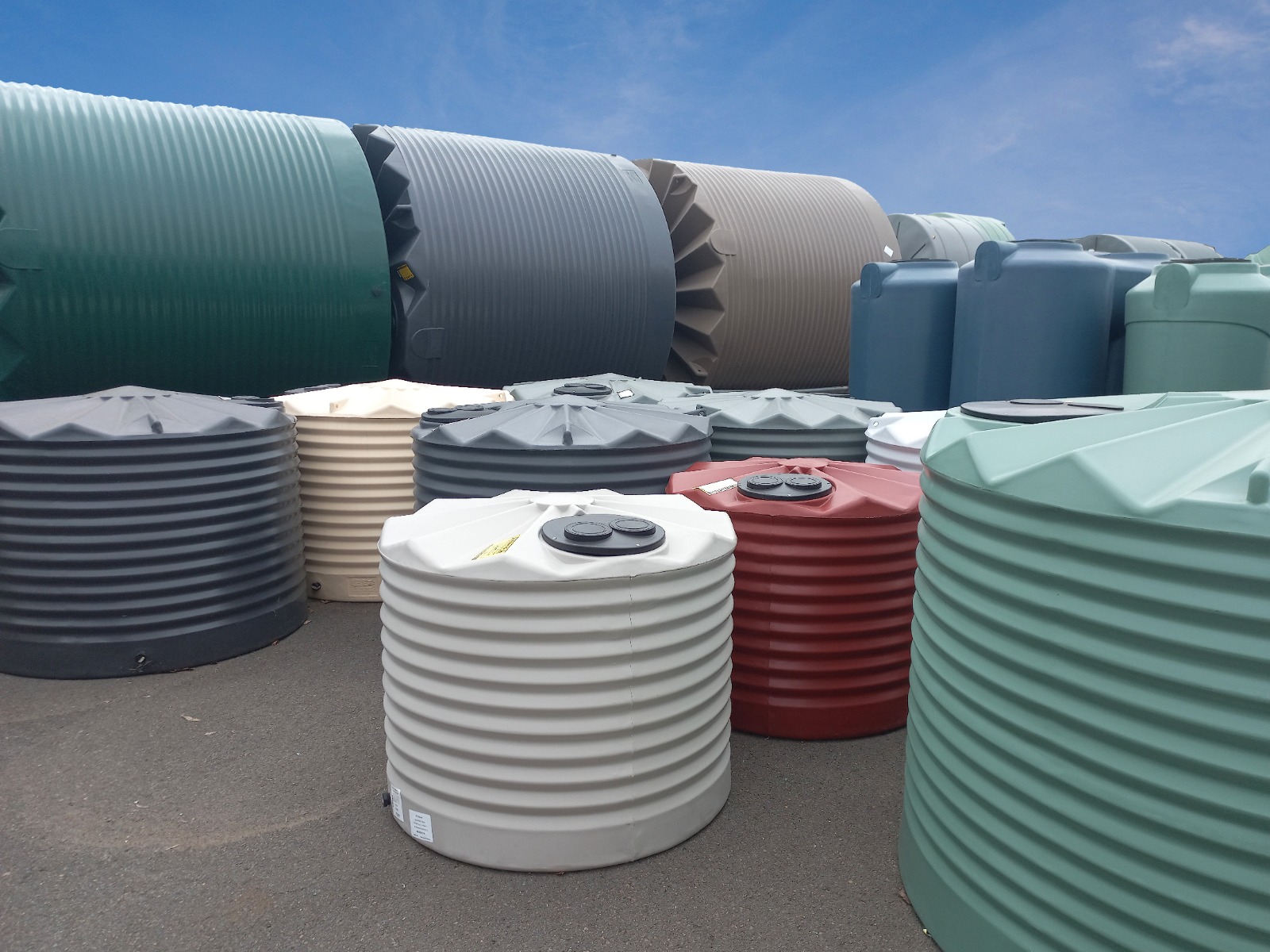Australia is the driest continent in the world and rainwater is a valuable natural resource that has been collected by households for domestic use since settlement.
While many people urge water conservation policy and practical action at national and state level, there is much that can be done to improve water security at the household level. The key strategy to address household water insecurity is the installation of a rainwater harvesting system as a method to mitigate water shortages and provide additional supply for domestic and household uses.
Opportunities for rainwater collection and use are location dependent. Most urban and regional households have access to mains water, but a rainwater collection system can significantly reduce mains water usage. Many off-grid rural households have to source water from their property using rainwater, rivers, bores and dams, with rainwater often being the preferred source for household supply.
How much water can you save? In this article, we run the numbers to give you a sense of what is possible.
For any rainwater harvesting system, there are a number of key variables:
- The average rainfall where you live
- The size of the catchment area that feeds your storage system
- The intended use of the water
The more intended uses, the more water you will need and the greater the potential savings in mains water.
Tankulator (www.tankulator.ata.org.au) is an online rain harvesting calculator that uses average rainfall in your postcode, your water usage (from your council water notice) and the size of your roof area to help you plan for a new rainwater tank. The Tankulator has been developed by the Alternative Technology Association and is supported by Sustainability Victoria.
Let’s apply some average data to Tankulator and review the results.
Average household water consumption in Australia varies; in Melbourne average usage is 161L per person per day while in Sydney the figure is 210L per person per day. With modern water saving household appliances and increased awareness, average usage is declining, and the Victorian government has a target of 150L per person per day.
The average family size is 2.53 people, which suggests the average family uses approximately 380L of water per day or about 140,000L per annum. In addition, there is likely to be increased seasonal water usage in summer to water gardens and top-up swimming pools, so total usage for an average household is likely to be 150,000 to 160,000L per annum.
70% of Australian’s live in detached housing and the average house size is 233m2. Let’s assume that rainwater can be harvested from 100% of this roof area.
If we use these averages in Tankulator, assume plumbing connections to bathroom, toilet, kitchen, laundry and garden and allow for additional seasonal water usage and calculate potential mains water savings in regional New South Wales and SE Queensland, the numbers might surprise you.
|
Location |
Postcode |
Tank size |
Water from tank (L) |
Water from mains (L) |
Days when tank water available |
Indicative annual saving* |
|
Tamworth NSW |
2340 |
10,000L |
110,343 |
46,357 |
257 (71%) |
$254 |
|
Dubbo NSW |
2830 |
|
103,184 |
53,516 |
244 (67%) |
$237 |
|
Orange NSW |
2800 |
|
135,400 |
21,300 |
317 (87%) |
$311 |
|
Griffith NSW |
2680 |
|
63,534 |
93,166 |
157 (43%) |
$146 |
|
Armidale NSW |
2350 |
|
125,624 |
31,076 |
285 (78%) |
$289 |
|
Toowoomba QLD |
4350 |
|
95,875 |
60,825 |
211 (58%) |
$221 |
* at average rate of $2.30/KL
For many householders in regional New South Wales, a 10,000L water tank can provide three-quarters or more of their total household water needs.
At Rapid Plas, we believe the question is not “Should I install a rainwater harvesting system?” but “Why wouldn’t I install a rainwater harvesting system?”
There is an initial set-up cost for a rainwater harvesting system, but the benefits accrue every year. Of course, savings on metered water costs would potentially be eroded by electricity costs for a pump and, possibly, filter consumables, but there is no doubt that using rainwater can reduce water bills, provide an alternative supply during water restrictions and help maintain a green, healthy garden.
In addition, the collective rainwater harvesting efforts of multiple household’s ripple outwards to:
- reduce the need for new dams or desalination plants;
- protect remaining environmental flows in rivers;
- reduce infrastructure operating costs, and,
- decrease stormwater runoff, thereby helping to reduce local flooding and scouring of creeks.
Ready to find out more? Talk to our expert team to find out how to configure your rainwater collection system and how we can help you. Call our team on 1800 816 299 or email sales@rapidplas.com.au with your enquiry.


